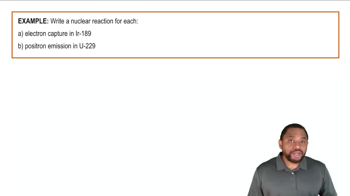Here are the essential concepts you must grasp in order to answer the question correctly.
Electron Transfer Reactions
Electron transfer reactions, also known as redox reactions, involve the transfer of electrons between chemical species. In this context, trimethylamine donates electrons to chlorine dioxide, resulting in the formation of the trimethylamine cation and the chlorite ion. Understanding the roles of oxidizing and reducing agents in these reactions is crucial for predicting the products and the overall reaction mechanism.
Recommended video:
Electron Capture & Positron Emission Reaction Example
Rate of Reaction
The rate of reaction refers to the speed at which reactants are converted into products. It can be influenced by factors such as concentration, temperature, and the presence of catalysts. In this question, the initial rate is determined by the concentrations of trimethylamine and chlorine dioxide, which can be analyzed using rate laws to predict how changes in concentration affect the reaction rate.
Recommended video:
Concentration and Stoichiometry
Concentration is a measure of the amount of a substance in a given volume of solution, typically expressed in molarity (M). Stoichiometry involves the quantitative relationships between reactants and products in a chemical reaction. In this scenario, understanding the initial concentrations of trimethylamine and chlorine dioxide is essential for calculating the initial rate of the reaction, as it directly impacts the reaction dynamics according to the stoichiometric coefficients.
Recommended video:




